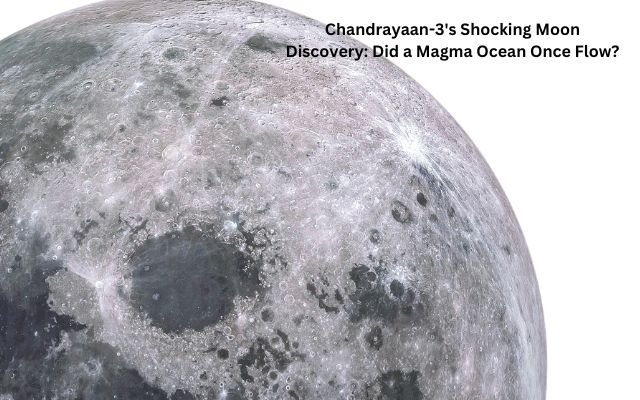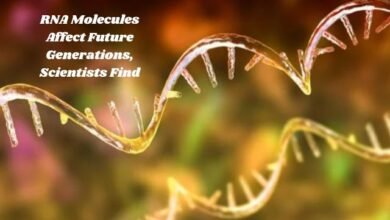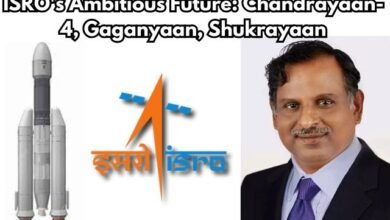Chandrayaan-3’s Shocking Moon Discovery: Did a Magma Ocean Once Flow?
India’s Chandrayaan-3 mission led by ISRO has found strong evidence that Moon may have once been covered by a vast ocean of magma. Pragyan rover discovered ferroan anorthosite an important mineral consistently across the lunar south pole. This finding suggests that the Moon's south pole shares a similar geological history with other regions.

Chandrayaan-3’s Shocking Moon Discovery: Evidence of an Ancient Magma Ocean? Discover the latest findings from India’s Chandrayaan-3 mission, led by ISRO, revealing fascinating insights into the Moon’s origins and geological history. Explore how this research is reshaping our understanding of the lunar south pole and its ancient past.
The mission achieved a significant milestone when it successfully landed the Pragyan rover on the Moon’s surface. This accomplishment has provided vital data that goes beyond what scientists had hoped for.
So, how did this discovery come about?
On August 23, 2023, India’s Chandrayaan-3 mission made history by successfully landing the Vikram lander on the Moon at a site named Statio Shiv Shakti. After the landing, the Pragyan rover began exploring the Moon, covering about 103 meters over ten days.
Rover was equipped with two important tools: Alpha Particle X-ray Spectrometer (APXS) and Laser-Induced Breakdown Spectroscope (LIBS). These instruments were used to study the elements in the lunar soil. APXS developed in Ahmedabad worked by sending X-rays and alpha particles to Moon’s surface, identifying elements like silicon, magnesium, aluminum, iron, calcium and others.
To collect accurate data, the rover stopped at specific locations for 20 minutes to three hours, depending on the requirements. With the help of 31 hours of data collection, APXS has improved scientific understanding of the Moon’s south pole surface. These discoveries have greatly expanded our understanding of the Moon’s geological past.
Was the Moon Once Covered by a Magma Ocean?
Chandrayaan-3 mission’s strong support for the Lunar Magma Ocean (LMO) concept is one of its most significant findings. According to this theory, there once was a massive ocean of molten rock that covered the entire Moon.
As this magma ocean cooled down, it formed different layers inside the Moon, including the crust, mantle, and core. According to this theory, the Moon’s crust is mainly composed of a type of rock called ferroan anorthosite (FAN), which contains a lot of the mineral plagioclase. FAN is thought to have formed when the lighter plagioclase minerals floated to the top of the cooling magma ocean and solidified into the Moon’s outer layer.
The Pragyan rover from Chandrayaan-3 found significant amounts of FAN in the lunar soil near the south pole. This finding is consistent with observations from previous missions like NASA’s Apollo and the Soviet Union’s Luna, which detected similar compositions in other parts of the Moon, such as the equator and mid-latitudes.
Finding FAN in the south pole area is especially important because it extends the support for the LMO hypothesis to a new and previously unexplored region of the Moon. It shows that the Moon’s crust has a uniform composition across different areas, supporting the idea that the Moon’s surface was once covered by a vast ocean of magma.
Is this theory completely proven?
The detection of ferroan anorthosite (FAN) supports the idea of a Lunar Magma Ocean (LMO) but doesn’t provide a full picture. Chandrayaan-3’s data also showed magnesium-rich minerals in the lunar soil, adding complexity to the LMO hypothesis. This suggests that the lunar crust near the south pole isn’t just made of FAN but includes other materials from deeper inside the Moon.
These magnesium-rich minerals are interesting because they might come from the Moon’s upper mantle, indicating that material from deeper layers could have been brought to the surface. This could have happened during the formation of the South Pole-Aitken (SPA) Basin, which is the largest impact crater in the solar system.
SPA Basin was most likely formed by massive asteroid impact between 4.2 and 4.3 billion years ago. It is roughly 2,500 kilometers wide and 8 kilometers deep. Pragyan rover observed a heterogeneous composition that may have resulted from material from deep within the Moon being disturbed by the impact and combined with surface material.
The soil at the landing site, Statio Shiv Shakti is more than just a simple remnant of the Moon’s early crust since it contains minerals that are rich in magnesium. Rather, it incorporates content from deeper levels offering insight into the Moon’s past and fundamental structure. The lunar soil close to the south pole is more complicated than in other previously examined places which can be explained by the combination of these components.
- The Wow! Signal: A New Theory That’s Out of This World (But Not Aliens)
- Mental Health Matters: Breaking the Stigma and Finding Solutions
- Over 4 Billion People Face Clean Water Shortage
Why is this discovery by ISRO important?
Findings of Chandrayaan-3 are essential to understanding the formation and geological history of Moon. Evidence is consistent with the theory that a global magma ocean formed the Moon’s crust. Nevertheless, it also implies that the lunar surface was considerably altered by mixing materials from various depths during subsequent events, such as the creation of huge impact basins.
This discovery is essential for future lunar exploration because it gives us a deeper understanding of the Moon’s geological processes. The consistent composition of the soil observed by the Pragyan rover provides a valuable reference point for future missions that study the Moon remotely. This consistency across various regions suggests that the processes that shaped the lunar crust were widespread, reinforcing the Lunar Magma Ocean hypothesis on a larger scale.
India’s Chandrayaan-3 mission has not only improved our understanding of Moon but also established India as a significant player in global space exploration. Mission’s success was celebrated throughout country leading Prime Minister Narendra Modi to declare August 23 as India’s new ‘National Space Day,’ commemorating historic lunar landing.



